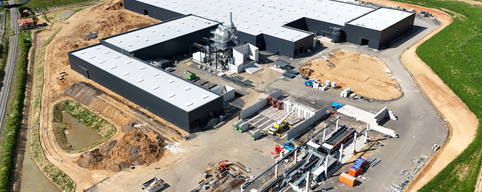

France's forest landscape has undergone considerable transformation over the centuries. Its history dates back to the Neolithic period, when the first human communities began to clear primary forests to develop agriculture and housing. This process gradually led to the decline of the original forests, but also marked the beginning of a deep bond between French man and his forests.
During the Middle Ages, forests were central to the French economy and community survival. Their role went far beyond mere economic exploitation. They were hunting grounds for the aristocracy, providing essential game and essential products such as honey, berries and mushrooms. Forests were also a vital source of wood, indispensable for heating and cooking, as well as for crafts and construction, making wood a strategic material for buildings of the time.
The seigneurial system of the time often defined rights of access to forest resources, and forest territories were jealously controlled. Each estate had its own rules on logging and grazing, and the balanced management of these resources was crucial to the subsistence of local populations. Woodlands were also a place of refuge and security, protecting against invasion and conflict, and thus contributing to social stability.
In this context, medieval forests also had a cultural and spiritual dimension, being perceived as both mystical places and resources to be exploited with care. This respect, combined with growing needs, probably led to the first reflections on forest resource management, laying the foundations for forest management as we know it today.
The 14th century saw the emergence of new, more advanced forms of forest management, in response to the growing pressure on forest resources caused by population growth and the expansion of farmland. These were the first steps towards modern silviculture, with a focus on forest regeneration and sustainability. Selective felling techniques, where only certain trees are cut, began to be implemented to preserve biodiversity and guarantee a continuous supply.
This development was marked by a series of regulations, mainly focused on the conservation of royal and seigniorial forests. The authorities sought to balance the common use rights of villagers with the need to preserve the resource for future generations. Strict regulations concerning logging, hunting and grazing began to develop in forest charters, the forerunners of modern regulations.
These practices evolved, influenced by the empirical knowledge of foresters of the time, who had an intuitive understanding of the natural cycles of forests. The very notion of a renewable resource took shape, with the idea that logging should be accompanied by restoration techniques. This turning point in silvicultural management shows the gradual awareness of the need for sustainable forest management.
Today, climate change presents significant challenges for the management of French forests. Fluctuating temperatures, more frequent droughts and violent storms are testing the resilience of forest ecosystems. Modern foresters need to adapt their practices to enhance the capacity of forests to respond to environmental stresses, while continuing to balance human economic needs with ecosystem preservation.
Recent studies show that silvicultural practices need to take account of climatic variations to predict changes in forest biodiversity. This means encouraging the establishment of tree species that are more resistant to new climatic conditions, while preserving the genetic diversity of existing forests. Proactive management, which includes the use of modern technological tools such as remote sensing and climate modeling, is becoming essential.
Foresters, with their experience and expertise, play a crucial role in this transition. They are at the forefront of rehabilitation and reforestation to deal with the damage caused by extreme climatic events. In addition, raising public awareness of the importance of forests and their vulnerability to climate change is an essential aspect of their mission, ensuring that France's forest heritage continues to be valued and protected for future generations.



